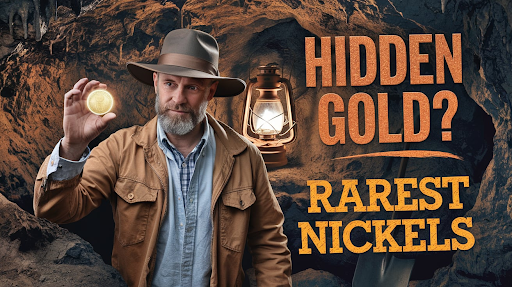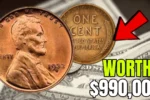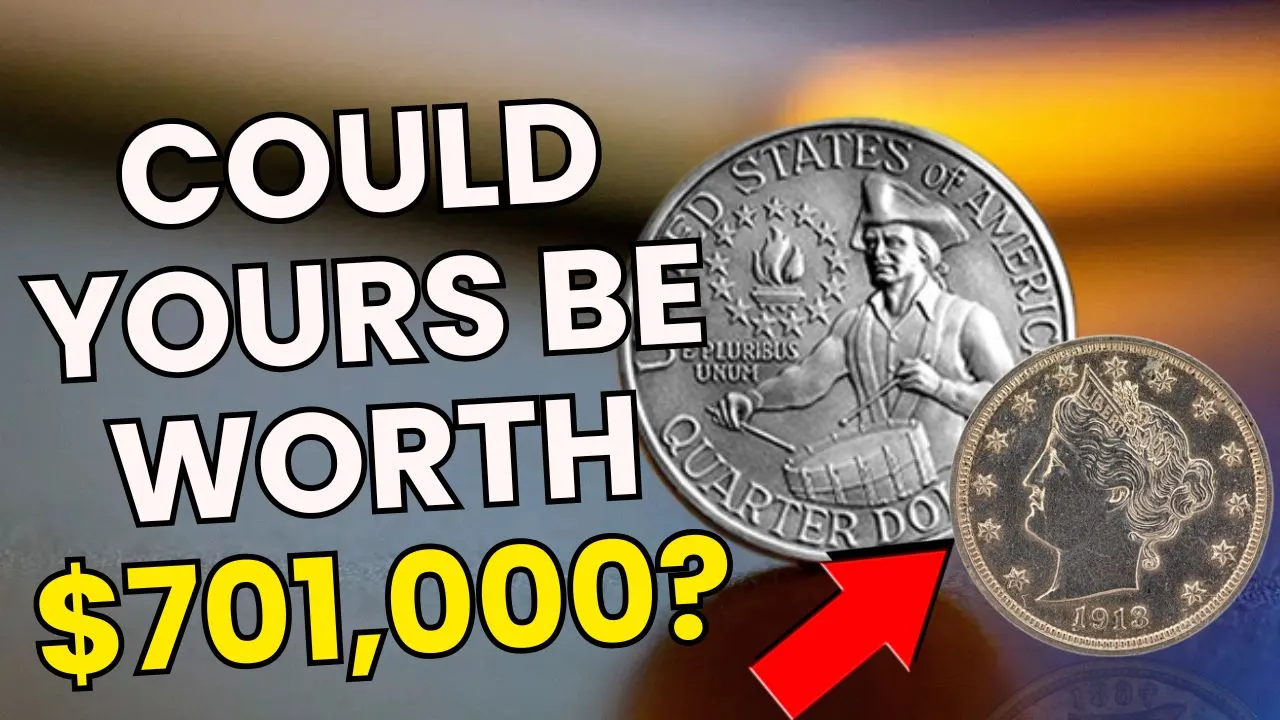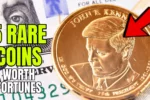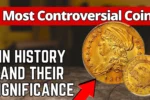The 10 Rarest and Most Valuable Nickels: RARE NICKELS are more than just spare change. Hidden among these small coins are some of the most sought-after treasures in numismatic history. Their value lies in rarity, errors, or historical context, making them worth thousands—or even millions—of dollars. For both seasoned collectors and curious newcomers, these nickels are a gateway to potential fortune.
This guide will uncover the 10 rarest and most valuable nickels ever minted. From mysterious production histories to fascinating minting errors, each coin tells a unique story. Keep reading to see if one of these rare coins might already be in your pocket or collection.
Overview: The Most Valuable Nickels at a Glance
| Coin Name | Year | Defining Feature | Value Range | Why It’s Rare |
| Liberty Head Nickel | 1913 | Only 5 examples known | $4.5 million+ | Unauthorized production |
| 1943-P War Nickel | 1943 | Made with 35% silver | $1.50–$10,000 | Wartime alloy change |
| 1916 Doubled Die Buffalo | 1916 | Doubling on the date | $3,000–$15,000 | Rare minting error |
| 1937-D 3-Legged Buffalo | 1937 | Missing buffalo leg on reverse | $500–$125,000 | Unique die polishing |
| 1867 Rays Shield Nickel | 1867 | Rays around the shield design | $2,000–$30,000 | Short-lived design |
1. 1913 Liberty Head Nickel: The Ultimate Collector’s Dream
The 1913 Liberty Head Nickel is a legend in the coin world. With only five examples ever minted, its rarity makes it one of the most coveted coins in U.S. history. What’s more intriguing is that these nickels were never officially authorized by the U.S. Mint. Their mysterious origins, combined with their immense value, make them a cornerstone of numismatic collections.
Why It’s Worth Millions
- Only five were minted, creating extreme scarcity.
- Their unauthorized production adds a layer of intrigue.
Estimated Value: $4.5 million or more
2. 1943-P War Nickel: A Silver Lining in Wartime
During World War II, nickel was needed for the war effort, so the U.S. Mint replaced it with a silver alloy. The 1943-P War Nickel, made with 35% silver, became an essential adaptation during the era. The large “P” mintmark above Monticello distinguishes this coin.
Why It’s Special
- Contains silver, increasing its intrinsic value.
- Represents a unique wartime innovation.
Estimated Value: $1.50–$10,000, depending on condition
3. 1916 Doubled Die Buffalo Nickel: A Happy Accident
The 1916 Doubled Die Buffalo Nickel is a striking error coin where the date appears doubled due to a misalignment in the minting process. Error coins like this are highly collectible because of their rarity and the skill required to identify them.
Why It’s Valuable
- Features a prominent doubling on the date.
- One of the rarest error coins in the Buffalo Nickel series.
Estimated Value: $3,000–$15,000
4. 1926-S Buffalo Nickel: Small Mintage, Big Value
The 1926-S Buffalo Nickel is another treasure for collectors, especially in uncirculated condition. With less than one million coins minted, finding one that hasn’t been heavily circulated is a real challenge.
Why It Stands Out
- Extremely low production numbers.
- Known for significant wear due to circulation, making pristine examples rare.
Estimated Value: $2,500–$250,000
5. 1918/7-D Buffalo Nickel: A Rare Overdate Marvel
Minting errors often turn ordinary coins into extraordinary finds, and the 1918/7-D Buffalo Nickel is a perfect example. This coin features a faint “7” underneath the “8” in the date, a result of reusing an outdated die.
Why It’s Sought After
- Rare overdate error.
- Few surviving examples exist today.
Estimated Value: $5,000–$350,000
6. 1880 Shield Nickel: A Proof of Rarity
The 1880 Shield Nickel is notable for its proof-only production. With just 16,000 minted, this coin is a key piece for collectors of early U.S. nickels.
Why It’s Rare
- Only available as proof coins, meaning no circulation examples exist.
- Limited mintage makes it a prized addition to any collection.
Estimated Value: $1,500–$20,000
7. 1937-D 3-Legged Buffalo Nickel: A Quirky Error
The 3-Legged Buffalo Nickel is one of the most famous U.S. coin errors. Its unique appearance, with the buffalo on the reverse missing one front leg, resulted from excessive die polishing at the mint.
Why Collectors Love It
- The error is easily recognizable and iconic.
- It’s a great conversation starter for any coin enthusiast.
Estimated Value: $500–$125,000
8. 1913-S Type 2 Buffalo Nickel: First-Year Rarity
As part of the inaugural year of Buffalo Nickels, the 1913-S Type 2 variety is historically significant. The coin features the revised “line” base for the buffalo, which replaced the original “mound” design.
Why It’s Valuable
- Low mintage of just over 1.2 million coins.
- Marks the start of an iconic coin series.
Estimated Value: $5,000–$75,000
9. 1942-D Over D Jefferson Nickel: Mintmark Mishap
The 1942-D Over D Jefferson Nickel showcases a “D” mintmark struck on top of another “D.” Such an error might seem small, but to collectors, it’s a big deal.
Why It’s Unique
- A rare minting mistake that is clearly visible under magnification.
- Popular with collectors of Jefferson Nickels.
Estimated Value: $1,000–$10,000
10. 1867 Rays Shield Nickel: A Design That Didn’t Last
The 1867 Rays Shield Nickel is a fascinating early coin featuring rays around the shield on its reverse. The design was abandoned later that year, making these coins highly collectible.
Why It’s a Must-Have
- Represents a short-lived design in U.S. coinage.
- An essential piece for Shield Nickel enthusiasts.
Estimated Value: $2,000–$30,000
FAQs About Rare Nickels
How can I spot a rare nickel?
Look for distinct features like minting errors, unique designs, or limited mintage years. Compare your coin to online guides or consult a numismatic expert.
Are all old nickels valuable?
Not necessarily. Age alone doesn’t determine value. Rarity, condition, and specific features like errors are more critical factors.
Why is the 1913 Liberty Head Nickel so valuable?
Only five examples were produced, and their unauthorized minting adds mystery and rarity, making them worth millions.
What’s special about War Nickels?
These coins were minted during WWII with 35% silver to conserve nickel, making them unique and historically significant.
Should I clean my coins before selling them?
No. Cleaning can damage the coin’s surface and reduce its value. Always leave coins in their original condition.
Final Thoughts
RARE NICKELS are a reminder that small things can hold incredible value. Whether it’s a historically significant coin or a fascinating error, these treasures highlight the art and history of U.S. coinage. So, don’t overlook that loose change—one lucky find could change your fortune.
Have you discovered a rare nickel? Share your story in the comments, and be sure to check your collection for any hidden gems!
